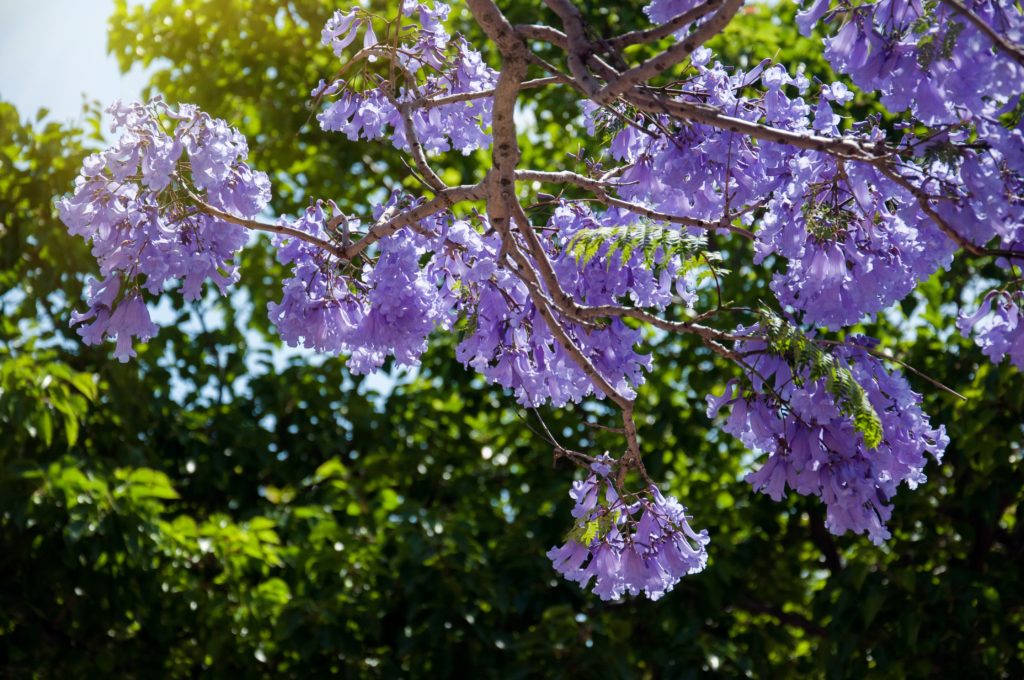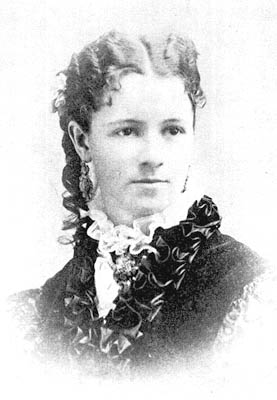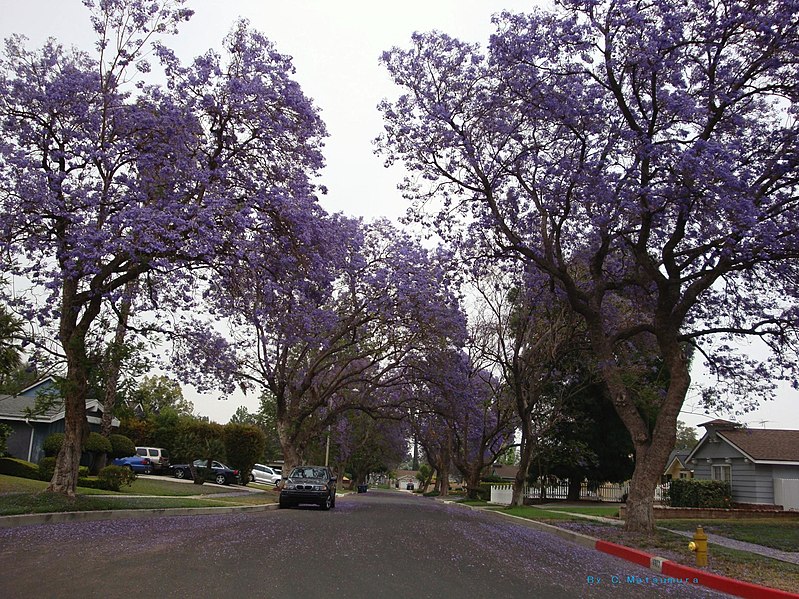
- calendar_month April 17, 2024
- folder Local news
It’s almost that time again. A point when the city itself seems to blossom in a violet-blue phantasmagoria of botanical beauty. A spectacle as aggressive in its vibrance as it is delicate in its serendipitous sensibility. Just as a watercolor bleeds beyond the audacity of a penciled boundary, the languidly waving blossoms seem to blend together in a natural majesty at once gentle and overwhelming. Looming like the umbrellas of gods and muses, weeping in a frozen revelry and wistful regret that mirrors life’s addictive flavors, the jacaranda trees open like a window into heaven before just as abruptly disappearing until fortune (and the right weather conditions) favor us once again. You’d be hard-pressed to find anything like it across the rest of the country. This inspiring sight happens in a blink, so here’s when and where to see LA’s jacaranda trees in all their spirited splendor.
Poetic Inspiration in Purple
Photo credit: Envato
Jacaranda trees have been inspiring area poets, novelists, journalists, artists, and Angelenos in general since their mysterious arrival in the city, most likely sometime in the mid- to late-1800s. Vladimir Nabokov, perhaps best known for his deeply grim novel Lolita, was reported to proclaim that he called LA home for the jacarandas alone.
Legendary noir scribe Raymond Chandler famously stated, “Beautiful hands are as rare as jacaranda trees in bloom, in a city where pretty faces are as common as runs in dollar stockings.”
Horticulturist and writer Chantal Aida Gordon poetically captured the mood of these trees when she wrote, “It’s the kind of tree you feel nostalgic for, even when you’re standing right in front of it.”
And writing for LAist, journalist Julia Wick nearly moved this blogger to tears when she wrote, “Their purple pageantry is the closest thing we have to seasons, to any season at all. They dazzle us and then disappear. And, as we look up at the space that was briefly purple and is now just sky, we Angelenos feel the rarest thing of all: time passing.”
Getting the Hots For Cold Colors
Photo credit: Envato
An immense part of the jacaranda’s mesmerizing beauty is its breathtaking color which ranges from a remarkably deep blue to a rich violet. While there are 49 known species of jacaranda trees, Los Angeles is blessed with the exceedingly beautiful Jacaranda mimosifolia, fittingly referred to as the “blue jacaranda.”
The color blue is a rarity in the natural world. A mere 10% of flower-producing flora around the globe are capable of producing blue-hued blossoms. It only makes the jacaranda trees that decorate the metropolitan streets of Los Angeles that much more striking.
Traits of Adult Jacaranda Trees
In 2010, experts identified just under 150,000 jacaranda trees across the Greater Los Angeles area. Adult jacarandas languidly reach anywhere between 25 to 45 feet up into LA’s expansive blue skies with generous canopies competing with nearly equal width.
Photo credit: Envato
The delicate, yet bountiful blossoms curve downward with a length not exceeding a couple of inches. For a tree with only moderate water intake, the jacaranda’s blossoms appear lively and full, plumpened with a sticky, milky fluid. When not in bloom, the trees produce rigid, dried seed pods popularly used in decorative crafts.
Blue and Gold
Like so much of the flora that defines LA’s metropolitan areas, jacaranda trees are not California natives. In fact, you aren’t like to find them in any of your travels across the United States. That’s because the jacarandas originated in South America, specifically the tropical and subtropical areas of Argentina and Brazil. So, how did these deeply exotic trees end up punctuating the arid avenues of Southern California? Nobody actually knows for sure.
One theory posits that the jacaranda trees appeared sometime during California’s Gold Rush. Ship captains sailing toward the lofty promises of California’s gold mines frequently stopped over in Buenos Aires on the way. Perhaps sailors smitten with the bewitchingly blue blossoms gathered seeds from these native trees to plant. Consider it insurance for a colorful future.
Photo credit: Envato
Another theory speculates that freight entrepreneur Phineas Banning paid to import the exotic trees for his Wilmington home sometime toward the end of the 1860s. Lavish displays defying nature are par for the course of the average American tycoon, after all.
But seasick prospectors and flagrant freight barons can’t be responsible for the expansive spread of the jacaranda trees we enjoy in present-day Los Angeles. For that, we only have one person to thank: botanist and horticulturist Kate Sessions.
Kate Sessions Paints SoCal with Jacaranda Trees
Sessions’ beautification of Los Angeles is well-documented so, while we may not know for sure how and when the jacaranda trees arrived, we know Sessions was at the root of their spread. She introduced plenty of other non-indigenous plants to Southern California that have become staples of the LA experience from birds of paradise to bougainvillea.
Photo credit: unknown
It was in 1892 that Sessions used a 32-acre spread of land owned by San Diego as a testing ground for exotic species. Once she illustrated that her jacaranda trees could thrive in the climate of Southern California, she introduced the trees to surrounding cities.
But it wasn’t until sometime in the 1920s that the blue jacaranda spread en masse across the Greater Los Angeles area. A mid-century boom followed ensuring that today’s Angelenos can easily find pockets of jacaranda trees in virtually every corner of the city. You just might not recognize them unless you’re seeing them during one of those rare months when they’re in full bloom. And that can be a bit of a challenge.
The Fickle Nature of the Jacaranda
Jacaranda trees are as unpredictable as they are stunning. On a lucky year, you can find them blossoming for a few weeks in the spring and then again in the autumn. The distinctive violet-blue flowers can appear as early as late March, though you’ll have trouble finding them past early June. But they’re known for being fickle. One street lined with jacarandas can be completely barren while the next street over is in the midst of one of the most spectacular blooms you’re likely to witness in your life.
Photo credit: gorian21
Overall, you’ve got a better chance of catching the jacarandas in the spring than in the fall. Weather influences the likelihood and intensity of a bloom. Speaking with LAist, Frank McDonough, a botanist with the Los Angeles County Arboretum credits the most striking blooms to heavy rains and years with weaker Santa Ana wind activity.
The Messy Side of Jacaranda Trees
Of course, not everyone’s a fan. Sessions’ introduction of non-indigenous species is controversial to native purists with beauty being irrelevant to a natural ecosystem. Then, there are the people who believe the majesty of the jacaranda trees isn’t worth the mess they create. Parking beneath a jacaranda in bloom is an instant recipe for a grueling car wash. And the plump purple blossoms are notorious for sticking to shoe soles and tracking violet stains into pristine homes.
Where to See the Jacarandas in All Their Glory
If you want to see the natural majesty of the jacaranda trees for yourself, you’ll likely find a collection of them nearby. Whether or not they’re in bloom is more of a mystery. Roll the dice and check this map courteously provided by LA’s Bureau of Street Services. It shows you the placement of all of the jacaranda trees planted across the Greater Los Angeles area. Just make sure to take off your shoes at the door when you get home!




